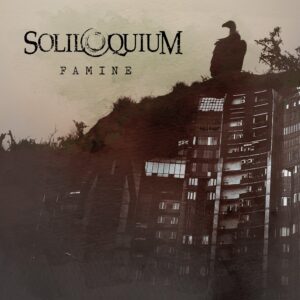
Death metal is a vast genre with several sub-genres, like technical death metal, brutal death metal and melodic death metal. This is my stab an ultimate guide to the music style. I’ll describe what I know and feel about the death metal genre, while doing my best to drop as many relevant band tips as possible along way.
I’ll start off by listing some essential death metal albums to understand the different styles. There will also be a list of my 10 favorite death metal albums. After that, we’ll dive into the many different sub-genres of death metal. I’ll do my best to mix genre descriptions with my personal opinions on the styles and different bands.
Written by:
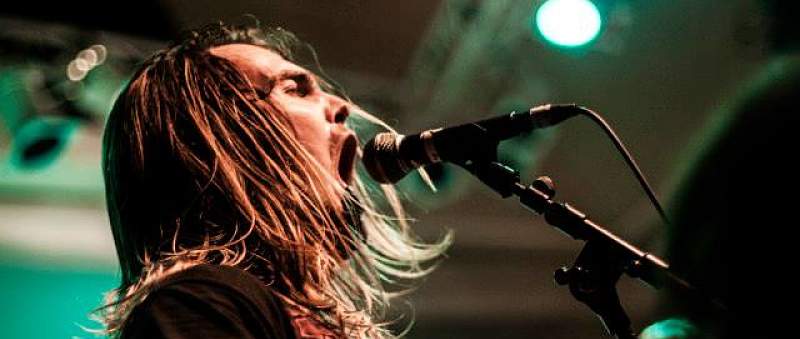
- Stefan Nordström
- Vocalist, guitarist, music writer
- Stockholm, Sweden
- Member of Desolator, Soliloquium and several other projects
Listen to Desolator
My old school death metal band, for fans of Morbid Angel, Immolation, Vader and more:
Bandcamp ->
Spotify ->
YouTube ->
Listen to Soliloquium
My progressive death/doom metal band, for fans of Katatonia, Swallow the Sun, Daylight Dies and more:
Bandcamp ->
Spotify ->
YouTube ->
Genre background
In the early and mid-80’s, thrash metal went more and more extreme. Bands like Slayer and Kreator were pushing the boundaries, both in terms of music and image. But how extreme could thrash metal go? Suddenly, Possessed and Death appeared on the scene. Death metal was born.
At this point, the borders between death and thrash metal were unclear. As death metal grew more extreme, it became more clear. Different sub-genres started developing. Suddenly, the genre consisted of everything from ultra-brutal bands to progressive and technical ones.
Today, the amount of bands is pretty insane. There’s a lot of good music out there. Keep reading to see what the different sub-genres are all about, and which releases to start with.
Old school death metal
I feel it’s best to start where it all began, with what’s now called old school death metal. Most people agree that the first albums from U.S. bands Death and Possessed started the death metal genre. I’m partial to Death’s “Scream Bloody Gore”, since it’s less of a thrash metal album than Possessed’s output.
I also personally think that it has much better songs. Death were also pretty quick to improve on their first album with sophomore effort “Leprosy” (1988), featuring classics like the title track and “Pull the Plug”. Bands like Autopsy, Obituary and Morbid Angel quickly arrived on the death metal scene, taking it in new extreme directions.
Another important early death metal style was the Swedish one. Entombed’s 1990 debut “Left Hand Path” turned a lot of the existing death metal ideas upside down. Some of the most notable things were the nasty chainsaw guitar tone, the hardcore punk influence and the chaotic song structures. My favorite Swedish death metal album, Dismember’s “Like An Everflowing Stream”, came out one year later.
Also worth knowing about old school death metal is that the style returned with a vengeance in the 2000’s, in form of what many call “new old school death metal”. Read more about that and more in my in-depth article on old school death metal.
Listening tips:
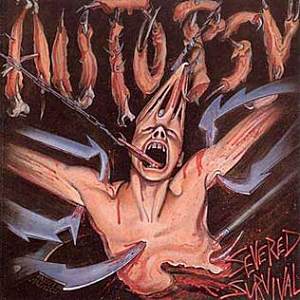
- Autopsy – Severed Survival (1989)
- Death – Leprosy (1988)
- Death – Scream Bloody Gore (1987)
- Dismember – Like an Everflowing Stream (1991)
- Entombed – Left Hand Path (1990)
Technical death metal
Technical death metal became a thing in the early 90’s. Progressive bands like Atheist, Cynic and Death brought jazz and experimentation into the genre and created a whole new take on death metal.
Death’s “Human” is a big album, as band leader Chuck Schuldiner recruited members from Cynic to merge their jazz influence with his death metal ideas. The result was a both influential and enjoyable album.
Meanwhile, Suffocation went ultra-brutal and ultra-technical at the same time with the 1991 debut “Effigy of the Forgotten”. Bands like Cannibal Corpse and Cryptopsy also joined in on playing brutal and technical in a similar manner.
Today, there are all kinds of technical death metal bands branching the style in different directions. The early 2000’s had a boom of extremely technical playing, as bands like Necrophagist and Decrepit Birth emerged. Gorguts experimental 1998 album “Obscura” also pushed the genre in a more avant-garde direction during that period.
Personally, I’ve had a rocky relationship with tech-death. Some bands play 2489234 notes and forget about both aggression and songwriting.
Read more about the music is style in my in-depth article about tech-death.
Listening tips
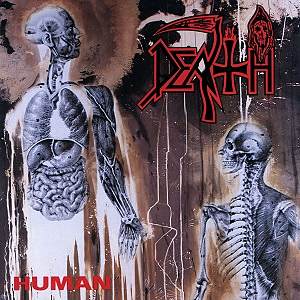
- Death – Human (1991)
- Hour of Penance – The Vile Conception (2008)
- Infinitum – The Sixth Extinction (2012)
- Psycroptic – The Scepter of the Ancients (2003)
- Suffocation – Pierced from Within (1995)
Live performances
Live gigs are, arguably, the best way to experience extreme music. It’s also the forum where truly great bands can improve on what they achieved in the studio. If you’re new to the style, I highly recommend that you attend a gig as soon as possible.
Seeing Dismember live back in 2003 was the moment I truly moved from just being a melodic death metal fan to a proper extreme metal listener.
Melodic death metal
The melodic death metal movement exploded in Sweden in the early 90’s. Bands like At the Gates, Dark Tranquillity and In Flames found inspiration in both traditional heavy metal and Scandinavian folk music. Melodeath quickly became a popular and influential sub-genre.
It was also very debated. Does melodeath really belong under the death metal genre tree, despite the name? Personally, I don’t always count it. Maybe it’s like this for some, since the actual extreme metal started to fade from the genre.
Some melodeath bands like The Haunted sounded more like thrash metal. Others, like In Flames and Soilwork, went so heavy on experimentation that they were virtually unrecognizable. The genre tree also grew in other directions and merged with heavy/power metal (Children of Bodom) and doom metal (Insomnium, Rapture).
Dive deeper into this genre by checking out my guide to melodeath.
Listening tips
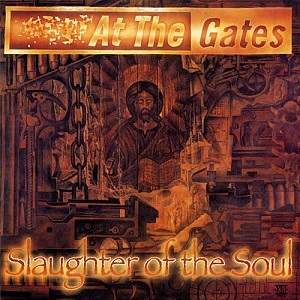
- At the Gates – Slaughter of the Soul (1995)
- Dark Tranquillity – Damage Done (2002)
- In Flames – The Jester Race (1996)
- Skyfire – Spectral (2004)
- The Crown – Crowned Unholy (2004)
Progressive death metal
Progressive death metal merges the chaotic song structures and strange time signatures from progressive music with the aggression of extreme metal.
Another side to prog-death are the bands that merge extreme sounds with progressive rock tendencies. Finland’s Amorphis did this early. Their 90’s output combined death metal with both 70’s progressive rock and Finnish folk. Dan Swanö’s “Moontower” (1998) is another interesting example of extreme music influenced by 70’s prog.
Death started becoming a progressive band when they recruited some members of Cynic in the early 90’s. That resulted in the 1991 masterpiece “Human”. By 1995, the band became even more progressive and melodic on the 1995 album “Symbolic”.
Opeth’s “Blackwater Park” album (2001) was a game changer for progressive death metal. Songs were around the 10 minute mark and featured acoustic breaks influenced by classic progressive rock.
Of course, Opeth had sounded like this for years, but “Blackwater Park” was where people really started noticing them. To me, it’s also the album where the band truly perfected their formula.
Head over to my progressive death metal article for in-depth info.
Listening tips

- Amorphis – Tales from the Thousand Lakes (1994)
- Cynic – Focus (1993)
- Dan Swanö – Moontower (1998)
- Death – Symbolic (1995)
- Opeth – Blackwater Park (2001)
Brutal death metal
As I said earlier, the most brutal side of the genre started out with Suffocation’s 1991 album “Effigy of the Forgotten”. With this album, most of the thrash metal connections of early death metal were gone. Morbid Angel started with this evolution with their blastbeat-heavy debut “Altars of Madness”, but to me Suffocation is the first time where it truly got brutal.
More and more bands started to pick up on playing brutal. It got more distorted and the vocals got more wild. Today, I feel that the brutal death metal scene is rather over-saturated. Not much feels extreme anymore. It’s up to the bands to pull off something different. Or just be so damn good at riffs and songwriting that it still stands out.
The gem of the sub-genre for me is Benighted from France, more especially the early 2000’s output. “Insane Cephalic Production”, “Identisick”, “Icon” and “Asylum Cave” are all highly recommended albums. Why Benighted? Well, the band is not only brutal. They’re unique-sounding and really dynamic and varied too.
Want to know more about the brutal death metal music style? Head over to my in-depth article on the topic.
Slam
Slam is a version of brutal death that focuses on slamming grooves and breakdowns. The style was largely popularized by Devourment. Later on, slam often became merged with deathcore, to become even more breakdown-heavy.
I’ll be honest: it’s not a favorite of mine. But the one album I do spin is the under-appreciated 2006 album “Lost Torso Found” from Swedish band Degrade. A total banger that I recommend anyone into extreme grooves to check out.
Grindcore
Grindcore isn’t really a sub-division of brutal death, but I think it’s connected enough to put here for context. The grindcore music style emerged when hardcore punk bands became more extreme. Napalm Death is the most famous grindcore band.
Later on, grindcore merged with death metal to form deathgrind. A famous and good example of deathgrind is Misery Index from the U.S.
Goregrind
Some grind bands went super-weird with their lyrical content. This gave birth to goregrind in the late 90’s. Most notably, Carcass from United Kingdom. Later, goregrind went even more crazy and gave birth to other small sub-genres.
Listening tips
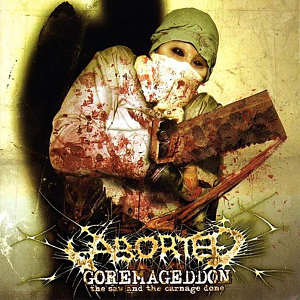
- Aborted – Goremageddon: The Saw and the Carnage Done (2003)
- Benighted – Identisick (2006)
- Degrade – Lost Torso Found (2006)
- Suffocation – Effigy of the Forgotten (1991)
- Suffocation – Pierced from Within (1995)
Death metal vocals
If you’ve checked out some bands in this guide, you already know that growls and screams come in many forms. Death’s Chuck Schuldiner started things out in a rather high-pitched and mid-ranged fashion. Bands like Suffocation and Cannibal Corpse introduced low and gurgly growls. The Swedish bands often had a punk- and hardcore-fueled aggression to them.
Looking to learn extreme vocals? Head over to my guide on how to growl and scream.
Death/thrash metal
Death metal originated from thrash metal; musicians simply wanted to go more extreme. Later on, many bands found their style by combining aspects of the two genres. The result were often super-fast, intense bands with a somewhat retro feel, many of them fantastic live bands thanks to the mosh pit-friendly music style.
Some old school thrash metal bands also turned extreme, Testament being the most well-known example. There are also death/thrash metal bands that combine the style with melodic death metal, some quality examples being The Crown, Dew-Scented and Carnal Forge.
Listening tips:
- Demolition Hammer – Epidemic of Violence (1992)
- Hypnosia – Extreme Hatred (2000)
- Merciless – The Awakening (1990)
- Pestilence – Consuming Impulse (1989)
- The Crown – Deathrace King (2000)
Final words
I hope this helped you learn some things about the music style and its sub-genres. There is a lot to discover. Not to mention all the underrated bands out there that doesn’t get the exposure they deserve.
If you think I did a good job on this, a good reward would be to check out my death metal band Desolator.
Read more:
Full doom metal genre guide ->
50 best Swedish death metal bands ->
My thoughts on death metal lyrics ->




